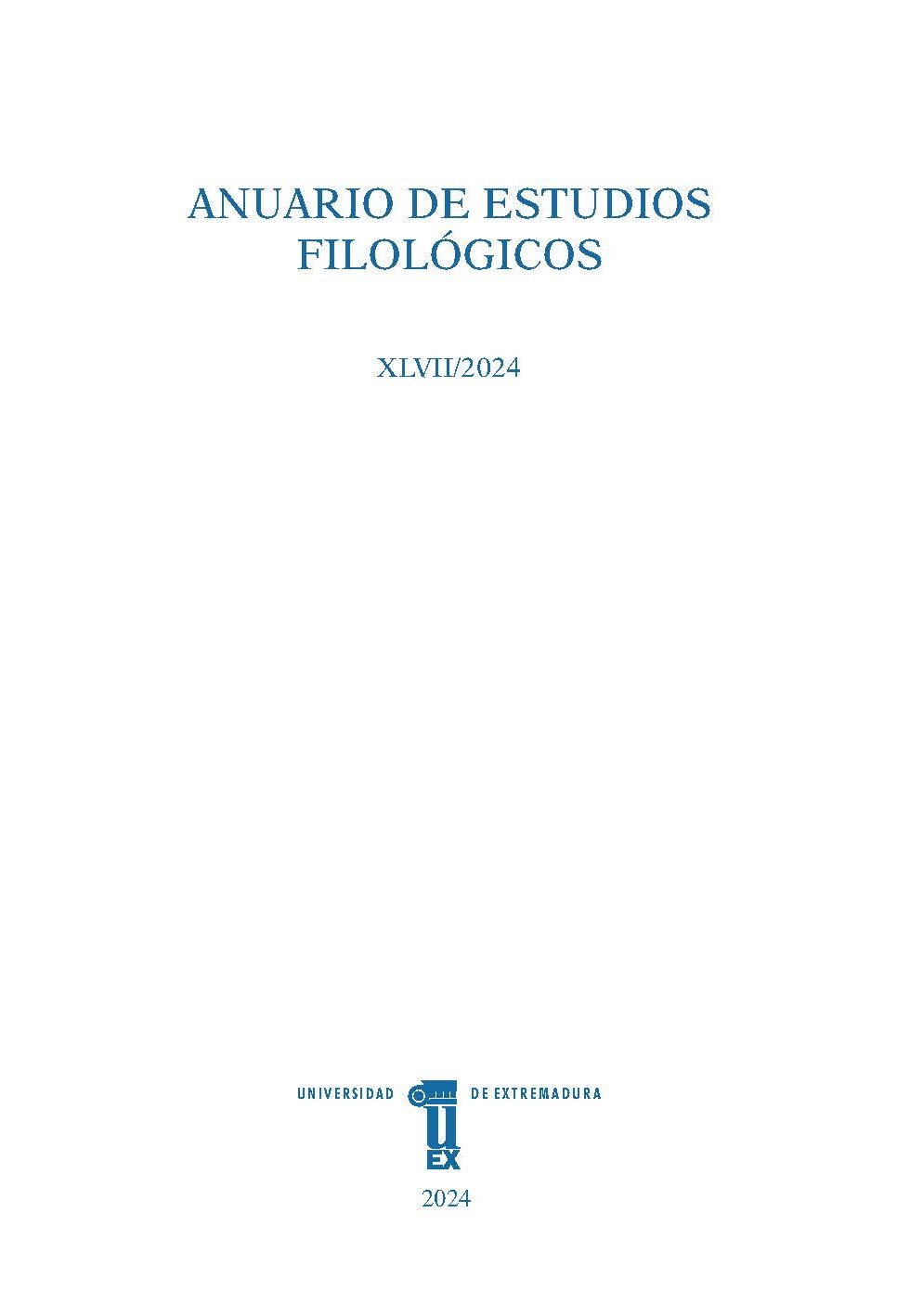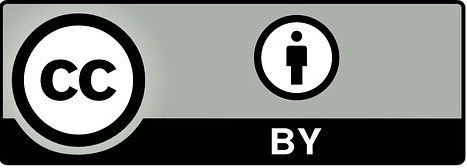Cognitive principles of the reception of lyric poetry: theoretical systematization, methodologies and analysis
DOI:
https://doi.org/10.17398/2660-7301.47.5Keywords:
cognitive poetics, lyric poetry, metaphor, mental spaces, Spanish poetryAbstract
The present work aims to gather a systematization of the main theoretical issues of the cognitive reception of lyric poetry (prototypicality, attention, mental spaces, deixis, and metaphor), as well as of its possible methodologies, in an attempt to bring these discussions to the Hispanic field. For this same purpose, additionally, a practical analysis of the critical reception of a lyric text by José Ángel Valente has been made, according to the cognitive principles and methodologies previously developed, so as to prove that this kind of approaches can explain the cognitive processes by which certain textual interpretations are constructed, questioning them and proposing alternative interpretations.
Downloads
References
AA. VV. (1996): En torno a la obra de José Ángel Valente. Madrid: Alianza.
AGAMBEN, Giorgio (1996): «No amanece el cantor» (AA. VV., 1996: 47-58).
ANDÚJAR ALMANSA, José (2011): «El limo y la ciudad celeste». En Andújar Almansa, José y Lafarque, Antonio (eds.): El guardián del fin de los desiertos. Valencia: Pre-Textos, 117-158.
ANDÚJAR ALMANSA, José (2019). «Valente y la palabra sumergida». Prosemas, 4, 53-84 (https://doi.org/10.17811/prep.4.2019.53-84).
ANCET, Jacques (1996): «La voz y el dolor» (AA. VV., 1996: 17-22).
BERMÚDEZ, Víctor (2019): «Dinámicas de la interpretación poética: emoción y estética cognitiva en la lectura literaria». Signa, 28, 139-171 (https://doi.org/10.5944/signa.vol28.2019.25044).
BERMUDEZ, Víctor (2020): «Perception et mouvement dans la poésie de Gilles Cyr». Çédille, 18, 337-364 (https://doi.org/10.25145/j.cedille.2020.18.14).
BRÔNE, Geert, y VANDAELE, Jeroen (ed.) (2009): Cognitive Poetics: Goals, Gains and Gaps. Berlin: Mouton de Gruyter.
COMBE, Dominique (1992): Les genres littéraires. Paris: Hachette.
CREWS, Frederick (1996): «The Verdict on Freud». Psychological Science, 7.2, 63-68.
DAMÁSIO, António (2010): Self Comes to Mind. New York: Pantheon Books.
DAYDÍ-TOLSON, Santiago (1994): «Las sombras y la luz: representación visual en la obra de José Ángel Valente» (Rodríguez Fer, 1994: 33-42).
DEBICKI, Andrew Peter (1992): «La intertextualidad y la respuesta del lector en la poesía de José Ángel Valente (1967-1970)» (Rodríguez Fer, 1992: 54-73).
DE SERMET, Joëlle (1996) : L’adresse lyrique. En Rabaté, Dominique (ed.): Figures du sujet lyrique. Paris: PUF.
ENGELSON MARSON, Ellen (1994): «Una peregrinación por el pensamiento crítico de José Ángel Valente: en busca del centro crítico» (Rodríguez Fer, 1994: 57-74).
FAUCONNIER, Gilles y TURNER, Mark (1996): «Blending as a Central Process of Grammar». En Goldberg, Adele (ed.): Conceptual Structure, Discourse and Language. Standford: Center for the Study of Language and Information, 113-130.
FAUCONNIER, Gilles y TURNER, Mark (2002): The Way We Think: Conceptual Blending and the Mind’s Hidden Complexities. New York: Basic Books.
FERRARI, Américo (1996): «El poema: ¿último animal visible de lo invisible?» (AA. VV., 1996: 23-32).
FREEMAN, Margaret H. (2007a): «Cognitive Linguistic Approaches to Literary Studies: State of the Art in Cognitive Poetics». En Geeraerts, Dirk y Cuyckens, Hubert (eds.): The Oxford Handbook of Cognitive Linguistics. Oxford: OUP, 1175-1202.
FREEMAN, Margaret H. (2007b): «Poetic Iconicity». En Chłopicki, Wladyslaw et al. (eds.): Cognition in Language: Volume in Honour of Professor Elzbieta Tabakowska. Krakow: Tertium, 423-452.
FREEMAN, Margaret H. (2008): «Revisiting/Revisioning the Icon through Metaphor». Poetics Today, 29.2, 353-370 (https://doi.org/10.1215/03335372-2007-028).
FREEMAN, Margaret H. (2012): «Blending and Beyond: Form and Feeling in Poetic Iconicity». En Jaén, Isabel y Simon, Julien J. (eds.): Cognitive Literary Studies: Current Themes and New Directions. Austin: University of Texas, 127-143.
FREEMAN, Margaret H. (2015): «Authorial Presence in Poetry: Some Cognitive Reappraisals». Poetics Today, 36.3, 201-231 (https://doi.org/10.1215/03335372-3160733).
FREEMAN, Margaret H. (2017): «Multimodalities of metaphor: A perspective from the poetic arts». Poetics Today, 38.1, 61-92 (https://doi.org/10.1215/03335372-3716228).
GAMONEDA, Amelia y SALGADO IVANICH, Candela (eds.) (2021): Paisajes cognitivos de la poesía. Salamanca: Delirio.
GIORA, Rachel (1997): «Understanding figurative and literal language: the graded salience hypothesis». Cognitive Linguistics, 8.3, 183-206.
JACOBS, Arthur M. (2017): «Quantifying the Beauty of Words: A Neurocognitive Poetics Perspective». Frontiers in Human Neuroscience, 11:622 (https://doi.org/10.3389/fnhum.2017.00622).
JACOBS, Arthur M. y KINDER, Annette (2020): «Computing the Affective-Aesthetic Potential of Literary Texts». Artificial Intelligence, 1.1, 11-27 (https://doi.org/10.3390/ai1010002).
JIMÉNEZ, José (1996): «El vuelo de la imagen» (AA. VV., 1996: 59-74).
KRUPA, Marlena (2016): «Mandorla la mística y lo corpóreo en el Cántico espiritual de San Juan de la Cruz y El fulgor de José Ángel Valente». Revista de literatura, 156, 597-620.
LAKOFF, George y JOHNSON, Mark (1980): Metaphors We Live By. Chicago: University of Chicago.
LÓPEZ CASTRO, Armando (1992): «Tapiès y Valente: hacia una visión de la materia interiorizada» (Rodríguez Fer, 1992: 295-304).
LOUWERSE, Max (2008): «Embodied relations are encoded in language». Psychonomic Bulletin & Review, 15.4, 838-844.
LOUWERSE, Max (2009): «Symbol Interdependency in Symbolic and Embodied Cognition». Topics in Cognitive Science, 3, 273-302.
LOUWERSE, Max y VAN PEER, Willie (2009): «How cognitive is cognitive poetics? Adding a symbolic approach to the embodied one» (Brône y Vandaele, 2009: 423-444).
LOUWERSE, Max y QU, Zhan (2017): «Estimating valence from the sound of a word: Computational, experimental, and cross-linguistic evidence». Psychonomic Bulletin Review, 24, 849-855 (https://doi.org/10.3758/s13423-016-1142-2).
LUJÁN ATIENZA, Ángel (2006): «El estudio de la poesía desde una perspectiva cognitiva: panorama y propuesta». Revista de Literatura, 135, 11-39.
LUJÁN ATIENZA, Ángel (2018): «Elementos para un análisis cognitivo del discurso poético». Verba hispánica, 26, 213-232 (https://doi.org/10.4312/vh.26.1.213-232).
MARTÍNEZ-FALERO, Luis (2010): «Las Cántigas de alén de José Ángel Valente: tradición y ruptura de la poesía gallega». Madrygal, 13, 79-87.
MARTÍNEZ-FALERO, Luis (2020): «Una propuesta sobre la creatividad literaria desde la Teoría de la Literatura y la Neurociencia». Archivum, 71.1, 147-164 (https://doi.org/10.17811/arc.70.1.2020.147-164).
MARTÍNEZ-FALERO, Luis (2021): «El estilo de habla y el estilo literario: algunas consideraciones sobre estilística cognitiva». En Cervera, Ángel y Hernando, Alberto H. (eds.): Pragmática y análisis del discurso en español. Madrid: Arco/Libros, 125-148.
MARTÍNEZ-FALERO, Luis (2022): «Teoría cognitiva y construcción textual del poema: patrones rítmicos y representación semántica». DeSignis, 35, 149-161 (http://dx.doi.org/10.35659/designis.i35p149-161).
OOMEN, Ursula (1999): «Sobre algunos elementos de la comunicación poética», Mayoral, José Antonio (ed.) (1999): Pragmática de la comunicación literaria. Madrid: Arco/Libros, 137-150.
PARIS, Joel (2017): «Is Psychoanalysis Still Relevant to Psychiatry?». Canadian Journal of Psychiatry, 62.5, 308-312 (https://doi.org/10.1177/0706743717692306).
RAE = REAL ACADEMIA ESPAÑOLA (2022): Diccionario de la lengua española (en línea: <https://dle.rae.es>, consulta: 12 de marzo de 2023).
RODRÍGUEZ FER, Claudio (ed.) (1992): José Ángel Valente. Madrid: Taurus.
RODRÍGUEZ FER, Claudio (ed.) (1994): Material Valente. Madrid: Júcar.
SALDAÑA, Alfredo (2009): «José Ángel Valente: la voz que viene del desierto». Revista de Literatura, 141, 171-192.
STOCKWELL, Peter (2002): Cognitive poetics: An introduction. Hoboken: Routledge.
STOCKWELL, Peter (2009): Texture: A cognitive aesthetics of reading. Edinburgh: Edinburgh University.
TARAVACCI, Pietro (2009): «Hacia el saber de la nada en Valente». La Página, 78/79, 75-91.
TSUR, Reuven (1992): Toward a Theory of Cognitive Poetics. Amsterdam: North-Holland Elsevier Science Publishing.
VALENTE, José Ángel (1996): «Imágenes» (AA. VV., 1996: 9-13).
VALENTE, José Ángel (2005): No amanece el cantor. Barcelona: Tusquets.
VALENTE, José Ángel (2008): Obras completas II. Ensayos. Barcelona: Galaxia Gutenberg.
VALENTE, José Ángel (2011): Diario anónimo (1959-2000). Barcelona: Galaxia Gutenberg.
VALENTE, José Ángel (2014): Poesía completa. Barcelona: Galaxia Gutenberg.
VALENTE, José Ángel y LARA GARRIDO, José (1995): Hermenéutica y mística: San Juan de la Cruz. Madrid: Tecnos.
ZEPF, Siegfried (2018): «Psychoanalysis Today – A Pseudoscience? A Critique of the Arbitrary Nature of Psychoanalytic Theories and Practice». Psychodynamic Psychiatry, 46.1, 115-134 (https://doi.org/10.1521/pdps.2018.46.1.115).
ZUNSHINE, Lisa (ed.) (2015): The Oxford Handbook of Cognitive Literary Studies. Oxford: OUP.



